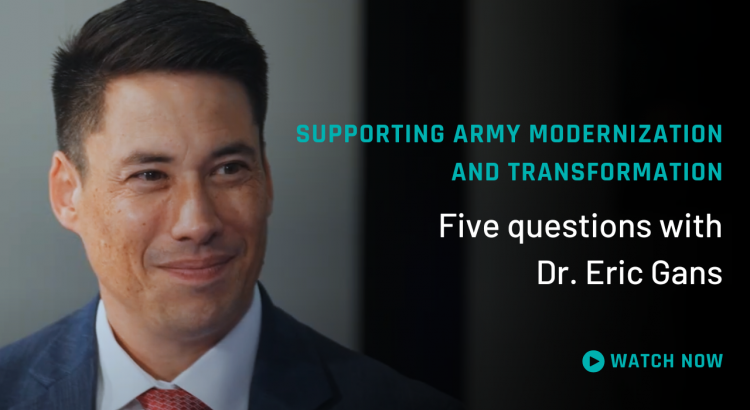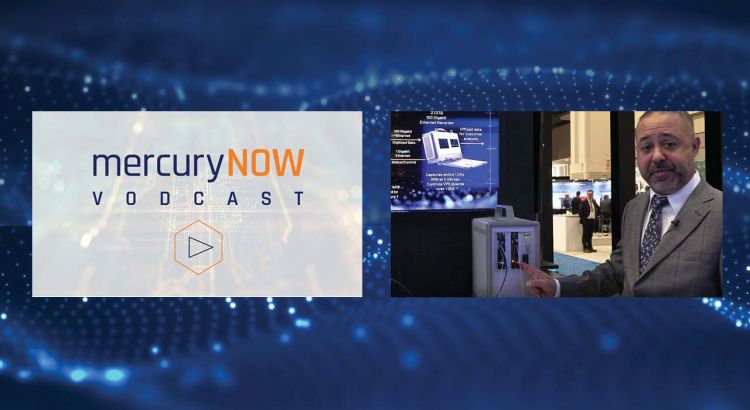
Delivering RF signal processing solutions to the edge with MOSA
Mercury Systems
August 30, 2022
Today's pace of technology development means the traditional approach of custom-designed modules and subsystems is too slow, but Modular Open System Architecture (MOSA) approaches can deliver on system demands without sacrificing performance or scalability.
Vodcast Highlights
What problems do customers have that can be solved with MOSA-based approaches?
Customers are trying to acquire and to generate signals in the range of 2 GHz to 18 GHz and do that with an instantaneous bandwidth throughout that range of 2 GHz. They also need to perform signal processing on the received signal before it gets sent out as a transmit signal. Usually that's done in an FPGA. The time it takes between the input and the output has to be extremely short, which means low latency.
What are some MOSA products Mercury offers as a solution to this need?
The first one is the RFM3202, which is a dual-channel RF up-converter and down-converter 3U VPX board. It mates directly with the second product, the DCM3220, which has two A-to-D converters and two D-to-A converters, as well as FPGA processing elements inside the 3U VPX board. Together as a pair, they represent a complete solution.
What kind of applications do the MOSA products support?
Ultra-wide, ultra-high-bandwidth applications from 0.3 GHz up to 18 GHz, including radar applications, and applications in SWaP-constrained, rugged environments such as unmanned airborne and naval.
Learn More:
White paper: SOSA and VITA Working Together for Next-Gen Defense Systems
Blog: Why SOSA® is driving the future course of embedded military electronics
Blog: Talking MOSA at the TSOA-ID: Remove the risk. Add the performance.
Open System Architectures at Mercury
Ralph Guevarez:
Hello, and welcome to MercuryNOW, a podcast series brought to you by Mercury Systems. I am your host, Ralph Guevarez. Thank you for joining us. Now, today's pace of technology development means the traditional approach of custom-designed modules and subsystems is too slow, but Modular Open System Architecture approaches can deliver on system demands without sacrificing performance or scalability. Joining me today is Rodger Hosking, Director of Sales for Mercury Systems. Rodger, good to see you. Thank you for joining me.
Rodger Hosking:
It's good to be here, Ralph.
Ralph Guevarez:
So Rodger, I see that you brought two products that directly address this conversation. Could you please tell us a little bit about them?
Rodger Hosking:
Sure. I'd be glad to. The first one is the RFM3202, which is a dual-channel RF up-converter and down-converter. It mates directly with the second product, which is our DCM3220, which has two A-to-D converters and two D-to-A converters, as well as FPGA processing elements inside the board. So together as a pair, they complete a very complete solution to the problem at hand.
Ralph Guevarez:
Thank you for that, Rodger. Now, what problem are customers trying to solve that led to the introduction of these products?
Rodger Hosking:
Okay. Customers are trying to acquire and to generate signals in the range of 2 gigahertz to 18 gigahertz. They need to do that with an instantaneous bandwidth throughout that range of two gigahertz. They need to also do some significant signal processing on the received signal before it gets sent out as a transmit signal. Usually that's done in an FPGA. The time it takes between the input and the output has to be extremely short, which means low latency. The last requirement, the solution has to be an open 3U VPX form factor.
Ralph Guevarez:
Thank you for that, Rodger. Now, how do the RFM3202 and the DCM3220 meet those requirements?
Rodger Hosking:
Sure. Well first of all, the RFM3202 has two channels of RF down-conversion, down-converting from 2 to 18 gigahertz as a center frequency, with a 2 gigahertz instantaneous signal bandwidth to an IF output. On the transmit side, we have an IF input that is translated up to between 2 and 18 gigahertz, with a 2 gigahertz signal bandwidth. The IF interfaces on the RFM3202 connect directly to the DCM3220, and using these rear panel connectors, the RF down-converted signals go into two low-latency, 12 bit, 6.4 gigasample-per-second A-to-D converters. That low latency is important to the overall application.
The signals then go into a Virtex UltraScale+ FPGA for some really heavy duty signal processing capability that might be required by the customer. There's also a Zynq UltraScale+ for control functions, moving data, and so forth. The data that comes out of the Virtex UltraScale+ goes into two 12 bit, 6.4 gigasample-per-second D-to-A converters, also very low-latency parallel interfaces that then generate two IF outputs, which again come out through this rear backplane connection back over to the input for the 3202 for the transmit side.
So in every case, what you've done is you've maintained a two gigahertz instantaneous bandwidth from the 3202 analog signal in and out to the IF signal in and out back here, and you've got your complete solution with every one of those requirements that I mentioned before fully met.
Ralph Guevarez:
Thank you for that, Rodger. Now, what kind of applications do these address, and why is it so important to our clients?
Rodger Hosking:
It's extremely important because in countermeasures, what you're trying to do is defeat something that your adversary is doing to you or trying to do to you. So for example, in a radar application, you may want to disable his radar so it doesn't work, or you may want to deceive his radar to make the radar think that you are in a different location than you really are. So these kinds of objectives can be met with different signal processing that's done in the FPGA in the DCM3220.
So the idea is to be extremely adaptable to the enemy, to be able to quickly change the response as required, so that the enemy, even though he tries to evade detection or he tries to get around your countermeasure system, you can keep following and keep deceiving or defeating his radar system from operating correctly.
One of the things that Mercury really does well is it first of all understands exactly what the customer is looking for, goes about the best way to meet the sometimes very difficult requirements as in this case to get a solution, and then to be able to deliver it reliably to the customer so that the war fighter is protected doing his job.
Ralph Guevarez:
Rodger, I want to take this opportunity to thank you for joining me. That was a great interview, and I really appreciate your time.
Rodger Hosking:
It's my pleasure. Thanks, Ralph.







 Three reasons to optimize the edge with distributed disaggregation
Three reasons to optimize the edge with distributed disaggregation